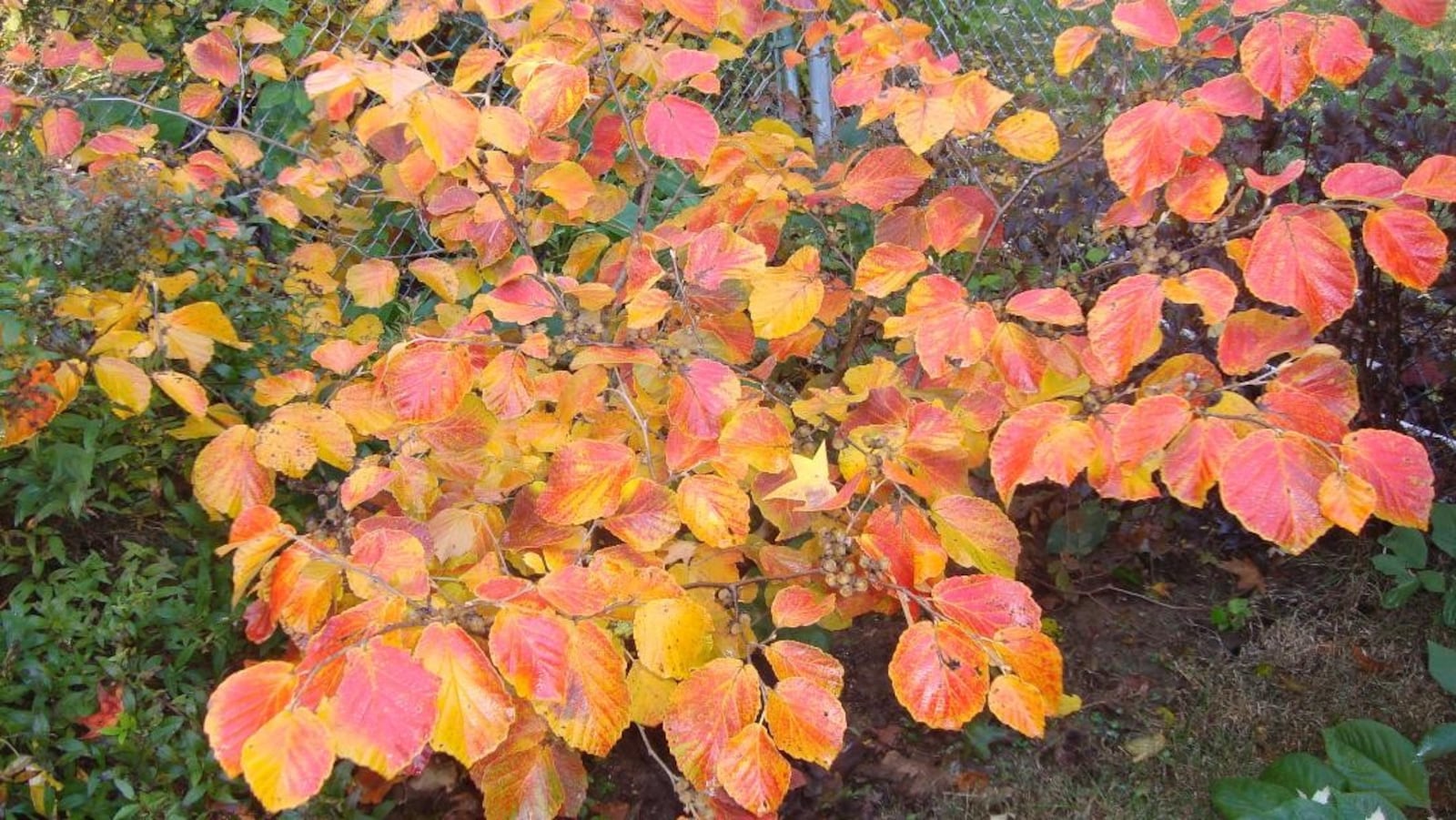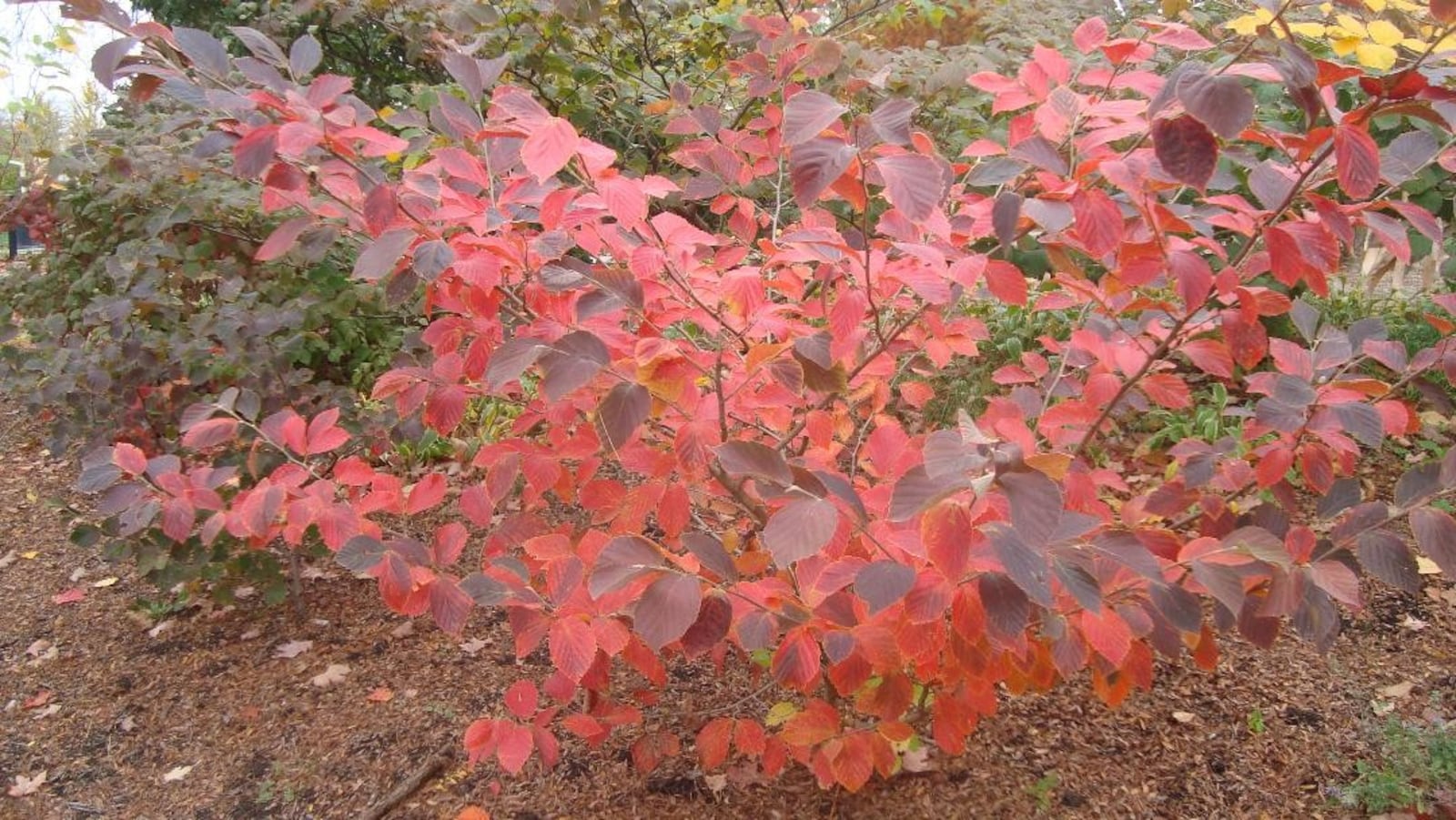“They have beautiful blooms during times when nothing else is blooming in our area,” said Schilb, 75. “Thus they provide nectar for honey bees when we have 40-degree days during the winter and early spring. Our vegetables require the bees to pollinate them and they make honey for food and store extra amounts to survive the winter. But if the winter is warmer or the temperature fluctuates, they use it up too quickly and the colony might collapse.”
Credit: CONTRIBUTED
Credit: CONTRIBUTED
The former Centerville High School and Oakwood High School science teacher, who holds degrees from The Ohio State University and Wright State University, also worked for Five Rivers MetroParks for 15 years.
In 2000 he bought his first witch hazel from Grandma’s Gardens in Springboro. He was interested in medicinal plants and grew to love the plant, whose genus name, Hamamelis, means “together with fruit.”
“The ointment from the leaves, bark and twigs provides an anti-itch salve,” Schilb explained. “There are Japanese, Chinese and American witch hazels and perhaps 180 hybrids. Three species live in the U.S.: the Virginia, Ozark and Mississippi witch hazels. The Virginia blooms in the fall, usually late October to November. The others in February and March. Flower colors are most commonly yellow in the fall and yellow, orange and purple for the spring species. There are a few naturally occurring varieties of the species (and) some have white, red, purple, cream, orange and yellow flowers.”
The Wegerzyn witch hazel collection blooms during the fall and spring. The fall blooming season typically starts at the end of October. If the fall is dry, the witch hazels stop blooming by mid-to-late November.
“It’s been dry, and because of that, the flowers are late this fall,” Schlib said. “But if it continues to be warm, and we get some more rain and the leaves stay on and we don’t have a hard freeze where the temperature drops into the teens, it’s likely they’ll bloom late in December. There are more plants that seem to bloom in the spring instead of the fall. If we have some warm weather in February, the gardens will look like a fairyland because the plants are in bloom and will have different colors like orange, purple, red and predominately yellow.”
Also, the spring blooms begin in mid-January as long as there is moisture in the air or wet weather and no hard freezes.
“We have over 125 witch hazels in the collection and they bloom from late October to early March,” Schlib said. “Many have fantastic fall color.”
Credit: CONTRIBUTED
Credit: CONTRIBUTED
The collection was started by horticulturist Chris Jensen in the late 1990s. According to the MetroParks website he first purchased a common, fall blooming witch hazel plant native to the eastern United States. The collection grew from there to include spring blooming plants, rare plants, plants that were only recently discovered and a few variegated plants.
In addition to Jensen, Schlib credits horticulturalists Megan Croswell, Janice Mittlecamp, Allison Bush, and Payton Johnson for their commitment to the collection, which contains hundreds of cultivars which are plant varieties that have been cultivated through selected breeding.
The Wegerzyn witch hazel collection is also one of the largest in North America by number of cultivars.
“The collection is primarily located on the east side of the gardens along the woodland walk and the south end of the gardens,” Schlib said. “This was the available space, but the plants prefer morning sun and afternoon shade. The sizes range from 2-foot dwarfs to 15 shrubs. They are all woody plants that survive the winter.”
HOW TO GO
Wegerzyn Gardens MetroPark is located at 1301 E. Siebenthaler Ave., Dayton. For more information, visit metroparks.org.
About the Author




